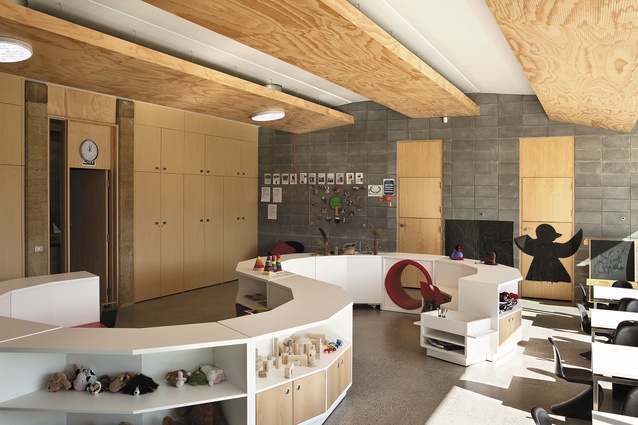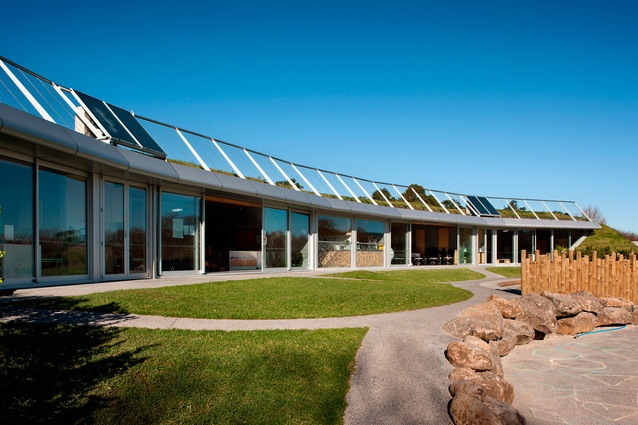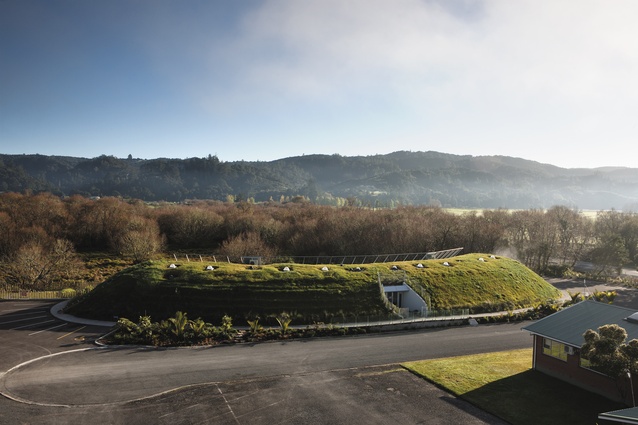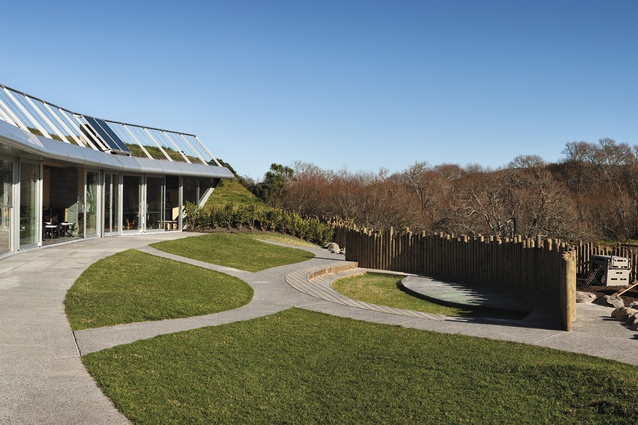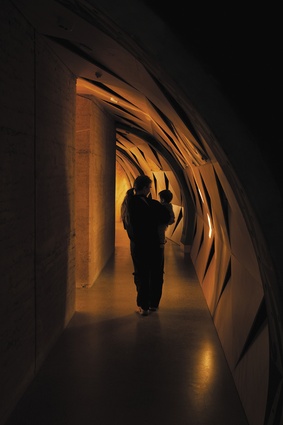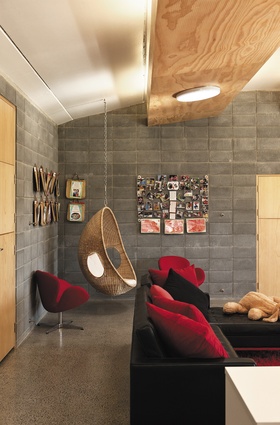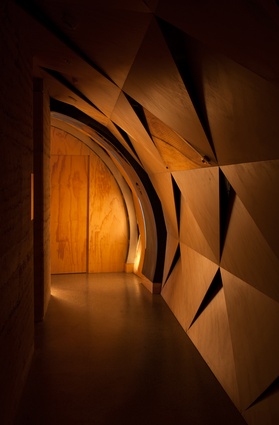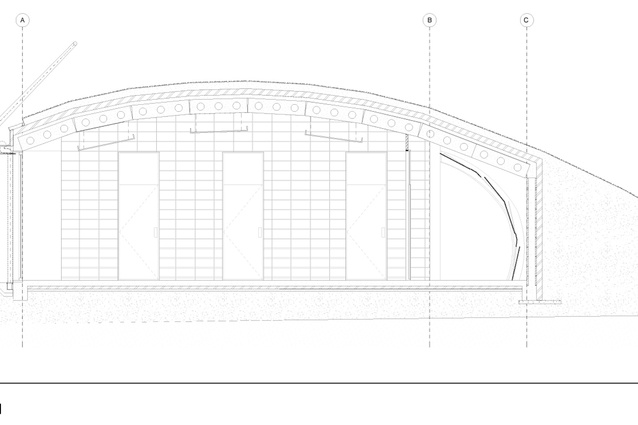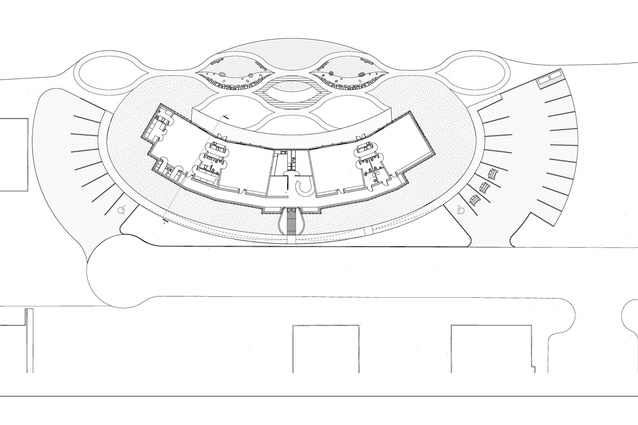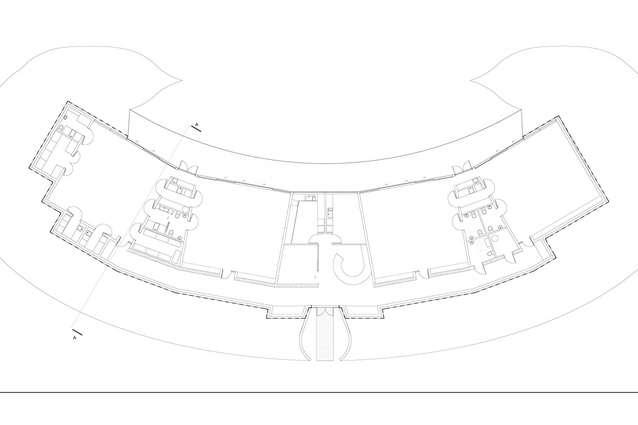Te Mirumiru
Northland: first and last part of our land, where Maori first came ashore, where spirits and 747s depart. The Bay of Islands was the location of some of the first European settlements and, of course, site of our first official attempts at getting down on paper an arrangement between our two main cultures: the Declaration of Independence of the Northern Chiefs and, a few years later, the Treaty of Waitangi. Our first capital was here too and our first wars between Maori and Pakeha.
Kawakawa is a lot like many rural townships; it has seen its share of ups and downs. Hundertwasser’s toilets have been the chief claim to fame for the last decade or two but Ngati Hine-pukerau, Ngati Hine of a hundred hills, a subtribe of NgaPuhi, has been tending the fires here for several centuries. Their latest initiative, Te Mirumiru Early Childhood Education Centre by Phil Smith Architects, will nurture and sustain several new generations of tamariki for the next few decades. The Ngati Hine Health Trust provides holistic health services for hapu and local communities in the area. A core aspect of the brief for this child-care centre, apart from the usual functional requirements of accommodating children in an environment with all sorts of opportunities to learn and grow, was to imbue in them the culture and customs of their heritage. In particular, the iwi asked that the building embody four significant cultural icons of Ngati Hine: tuna (eel), the ancestral waka, the ancestress Hine a Maru and caesarian birth – Hine a Maru was the first Maori woman to give birth this way 600 years ago. And, of course, the building design was also to have at its heart the concept of kaitiakitanga (guardianship of the environment).
The building’s form is that of a long crescent, opening to the north with a grass roof to the south. At first glance, the juxtaposition of earth mound with asphalt road and car park seems fairly abrupt, but perhaps that is because we have just become so used to many of our buildings being unambitious little boxes. Perhaps it’s the road that is really at odds with the landscape here. And too often our schools and hospitals take conventional forms, badged with a few carvings or koru in token attempts to denote our current bicultural relationship. This building is unequivocal in its rejection of that approach and it should be remembered that Maori have inhabited this land for several centuries with an architecture that carved into and made use of earth as much as it did of timber, to sustain people in both peace and trouble.
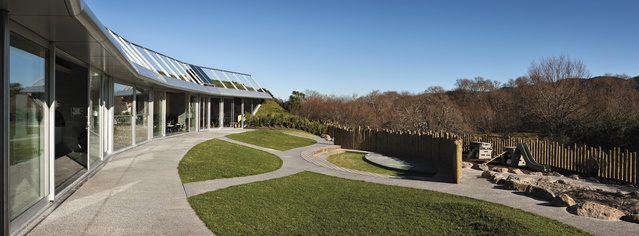
The use of earth here also makes tangible that key relationship between Maori and the land: whenua. But whenua also means, among other things, placenta, and the structure can also be seen as womb-like in nature, embracing and sustaining both children and caregivers. And if this building is a figurative womb then that glazed opening to the north, the sweeping cut in the mound, represents the caesarian section of the ancestress Hine a Maru, from which a child emerged into the world of light in a similar way to that by which Maori were brought into being from Papatuanuku, the earth mother, in their creation story. Perhaps less successful in the design are the symbolic expressions of tuna and waka which are depicted in a rather small pool and bridge at the entry. But scale isn’t everything and this moment in the building gives place for pause, acknowledgement and reflection.
Inside the building, circulation runs along the back of the structure to enable all of the main rooms to open directly out to the playground and the sunlight. This circulation crescent is gradually being decorated with the work of local artists and craftspeople, an ongoing process that maintains the integration of community and the child-care centre, but one of its most lovely features is a rammed earth wall that runs along the curve of the corridor. This has a lovely warmth and tangible quality – I couldn’t keep my hands off it. One can imagine the patina it will acquire from this sort of stroking over the next few years: evidence of a building lived in rather than kept spic and span, a trace of the many little lives that passed through this place and were shaped here.
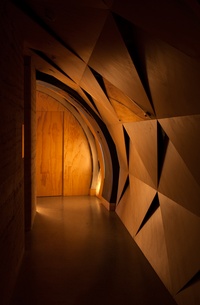
The actual child-care rooms are divided up between babies and year groups, interspersed with whare paku, service areas and teachers’ non-contact spaces. The rooms have a spacious, open and easy relation with the outdoors allowing children to drift in and out. They are all naturally lit and ventilated with a few rows of tubular skylights towards the back to augment light through the main glazing. Apparently these rooms hardly ever need the lights to be turned on but, as the building is oriented a bit west of north, they can be a bit bright and warm on a winter afternoon when the sun is low. As you would imagine, the building operates on a passive heating principle: utilising solar gain in the slab and the super-insulation of the mound’s rear walls and roof. There is a solar hot-water heating system in the floor and photovoltaic panels on the roof, and all black water is treated on site and used to irrigate the green roof. It’s not all playground outside either; there are vege gardens and composting systems which the kids tend as well. And this is one of the few places I’ve seen where the kitchen is upfront and central rather than stuck out the back. Smith is hopeful the building will be awarded six green stars but, whether or not that happens, it remains an embodiment of sustainability and the concept of kaitiakitanga, care for the environment.
In Western culture, after decades of consumption driven by the exigencies of capitalism, we are finding ourselves at a point where we have to reassess our relationship with the wider environment and the values we have in a changing world. And, after a century of modernism and its focus on the functional, we have tended to eradicate those values from everyday expression and definitely to save symbolism and the spiritual for Sundays, for those that way inclined. But, in this building, cultural and spiritual values are seen as fundamental to identity and nurtured in an everyday environment, in an attempt to inculcate them on a daily basis into the young – who hopefully won’t make the same mess of the world we have.

